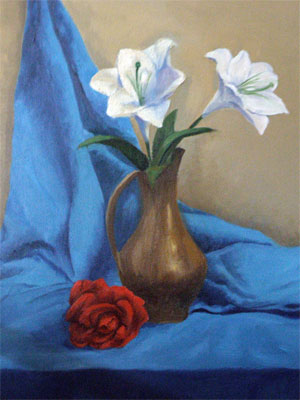All Nonfiction
- Bullying
- Books
- Academic
- Author Interviews
- Celebrity interviews
- College Articles
- College Essays
- Educator of the Year
- Heroes
- Interviews
- Memoir
- Personal Experience
- Sports
- Travel & Culture
All Opinions
- Bullying
- Current Events / Politics
- Discrimination
- Drugs / Alcohol / Smoking
- Entertainment / Celebrities
- Environment
- Love / Relationships
- Movies / Music / TV
- Pop Culture / Trends
- School / College
- Social Issues / Civics
- Spirituality / Religion
- Sports / Hobbies
All Hot Topics
- Bullying
- Community Service
- Environment
- Health
- Letters to the Editor
- Pride & Prejudice
- What Matters
- Back
Summer Guide
- Program Links
- Program Reviews
- Back
College Guide
- College Links
- College Reviews
- College Essays
- College Articles
- Back
Examining the Thematic Female Identity and Experiences in Sylvia Plath’s Poems
As the boundary of fact and fiction slowly diffused due to invented statistics and Tet Offensive by the late fateful 1960s, literature started to orient in two opposite directions: the exploitation of reality versus the exploration of fantasies. Inheriting the motto of “the personal is political,” Sylvia Plath’s work clearly belongs to the former, as it bristles with apocalyptic images and postmodern metaphors. From the omnipresent male gaze in Mirror, the discrepancy between the speaker’s social and personal self-image in In Plaster, and the transcendental, free-wheeling figure in Ariel, Plath encompassed a range of issues with female identity and experiences in postwar America in her poems.
'Mirror' is a repetitive image in Plath’s poem Mirror. With the use of 'pink, with speckles,' a color specific to femininity, readers could sense her conceptions of herself in the frame of society, an echo of patriarchal mindset internalizing in women. In the next stanza, the 'mirror' shifts to a ‘lake’, with the woman ‘bending over and searching for what she really is.’ The transformation morphed the mirror from a feminine figure to a masculine one, yet it implies women’s inability to recognize themselves spiritually than superficially. During the 1960s, women were clouded with a misted perception of themselves, longing for interpretations beyond maternity and sexual creature while the domestic roles subjugated by society and men disengaged them from searching for further self- knowledge. Forging ahead, Plath compares the fickle moons to liars, suggesting that they are not truthful representatives of one's appearance as misty moonlights can beautify one, which implies the fundamental male gaze women are supposed to suffice. As Laura Mulvey puts it: “Therefore, the female body is an emblem of another's pleasure, not as a proclamation of self-identity” (Mulvey, 6-18).
If the heroin in Mirror is cast in the role of a victim of the patriarchal gazes, In Plaster is a poem where the heroin stretched beyond the issue of women’s identity crisis and tries to reconcile her double-self. Two images dominate the poem: a white plastered self that “is one of the real saints” and an old yellow one, separately corresponding with the caring female that social demands favor and one that is imperfect but originated. The epiphany that the true self can survive without the help of the objectified self formed when she wrote, “I’m collecting my strength / one day I'll manage without her,” where the speaker leaves rays of hope while she might live on her own and get rid of the encased plaster.
Beyond relating to women and Plath herself, the speaker in Ariel transcends gender and elicits greater independence. The comparison between herself and Lady Godiva (“White Godiva / I unpeel / dead hands, dead stringencies”) is essential to understanding her emancipation thoughts. Lady Godiva rode on a horse naked to protest her husband’s heavy taxations on people, and Plath imagined herself to be Godiva while riding alone in the darkness. What’s different is that her ride was not aimed at destroying men, but at gaining power and evocativeness herself, as she transformed into “God’s lioness” in a vivid trance. Forging ahead, as “the child’s cry melts,” she turned away from the motherhood to an “arrow” taking control of her life and ready to leap into the “red eye,” the sun, symbolizing her transcendence of womanly duties into alliances with nature.
In conclusion, Sylvia Plath has been acknowledged as a feminist writer of great significance. Her works reflect her awareness of and distaste for the submissive roles of women and strive to stretch the imaginary limitations of their self-images. From the passive role the speaker assumes in Mirror, to the two incompatible versions of oneself in In Plaster, and the eventual compassionate, inner- directed sight in Ariel, Plath’s poems recapitulated the gradual evolvement of feminism from placing the binary opposition between sexes to eliminating gender binary and achieving wholesome identity and freedom for all women.

Similar Articles
JOIN THE DISCUSSION
This article has 0 comments.
